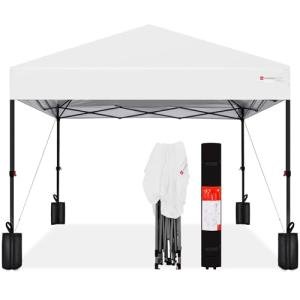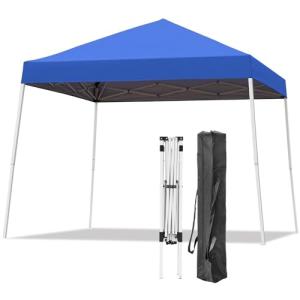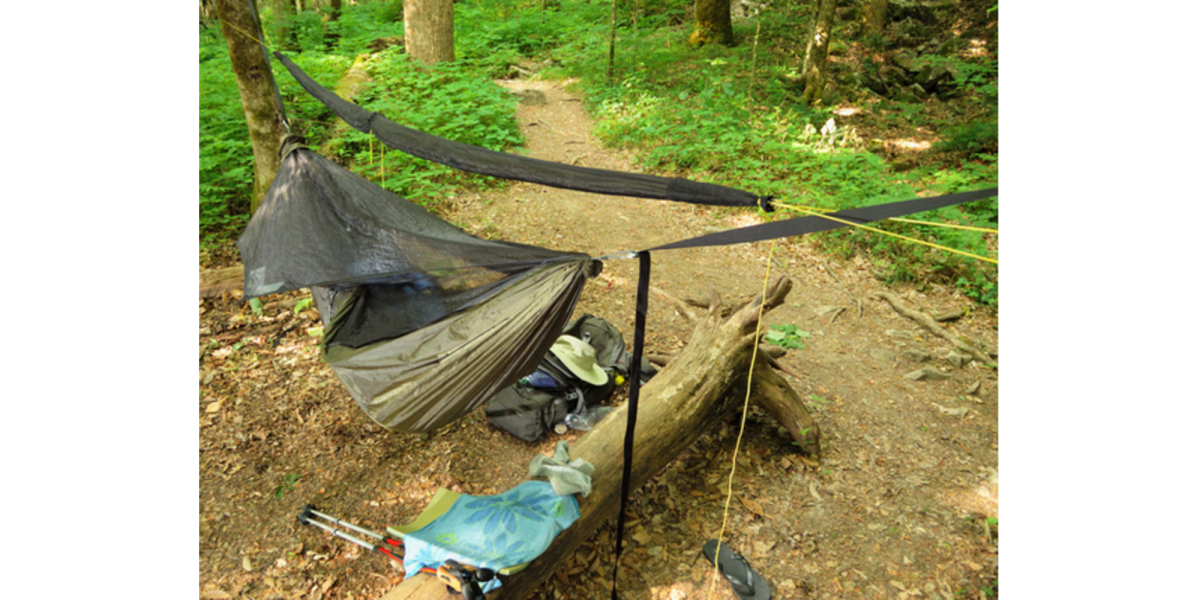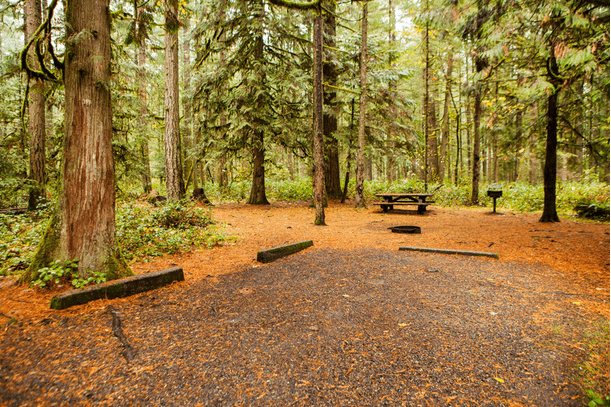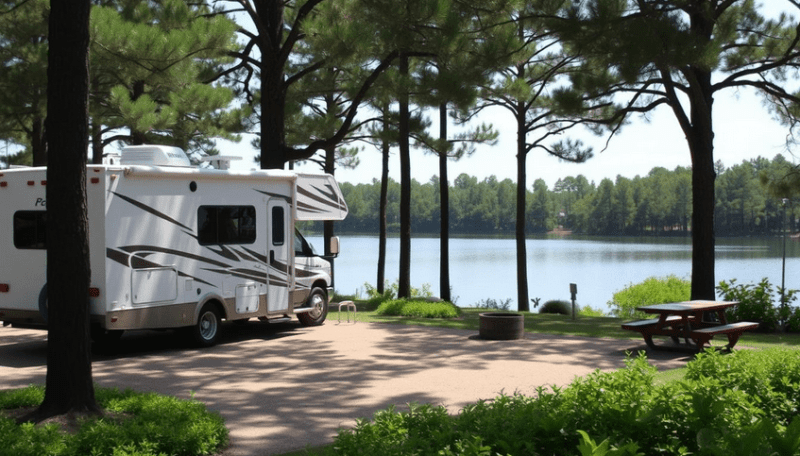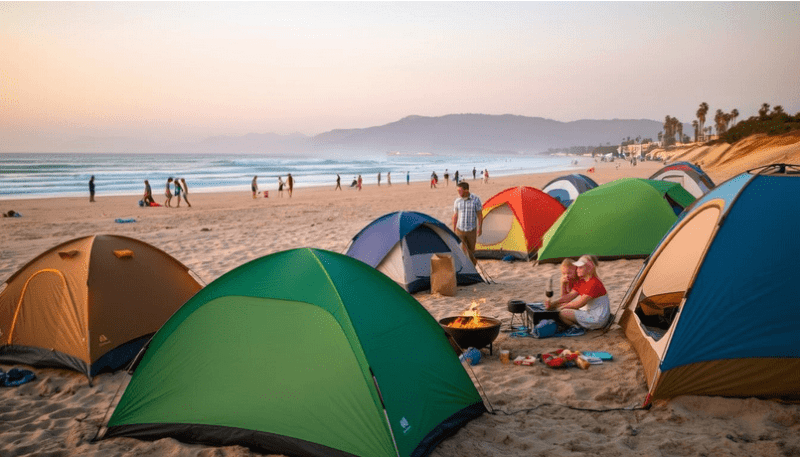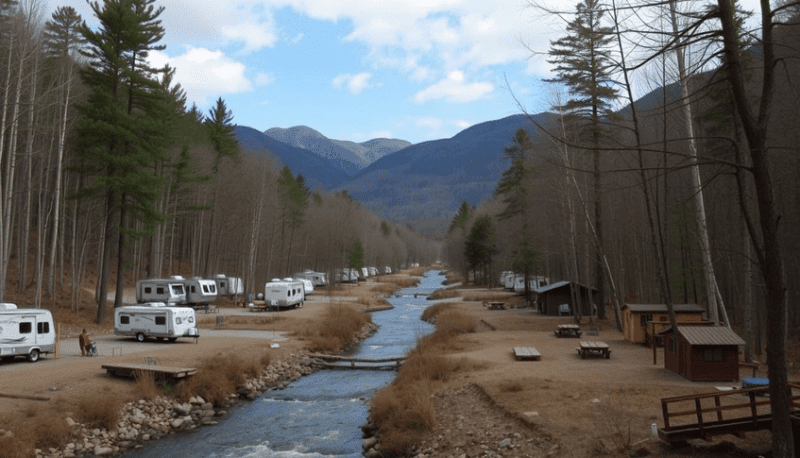Camping near trails may seem convenient, but it comes with significant downsides. Firstly, noise and foot traffic from other hikers can disturb your peace and solitude.
Moreover, setting up a camp too close to trails risks damaging trail integrity and disturbing wildlife that rely on quieter, undisturbed areas.
Choosing the right spot for camping is crucial. By understanding the impacts of our camping decisions, we can contribute to preserving the natural beauty around us.
Staying away from trails ensures we do not contribute to the erosion or widening of trails. This is key to helping maintain the serene environments we come to enjoy.
Opting for a site that follows Leave No Trace principles is essential to responsible camping. It helps protect natural spaces for future generations and minimizes human environmental impact.
This careful approach benefits both the ecosystem and our wilderness experiences.
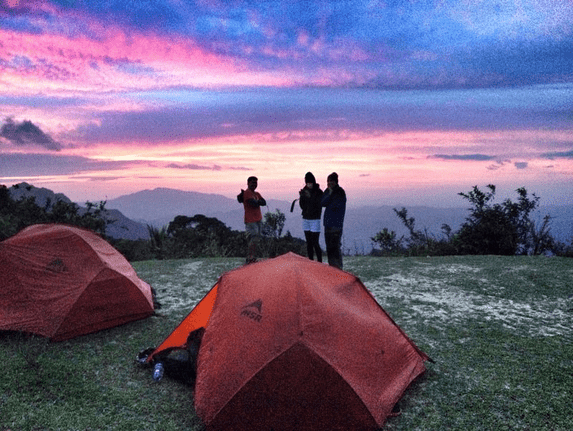
Key Takeaways
- Avoid camping too close to trails to protect their integrity.
- Choose campsites that minimize human impact on nature.
- Follow Leave No Trace principles for responsible camping.
The Importance of Campsite Selection
Choosing the right campsite is crucial for conserving natural areas and minimizing our environmental impact. By selecting appropriate sites, we help preserve fragile ecosystems and respect wildlife habitats.
Avoiding Fragile Ecosystems
When we camp, we must be mindful of leaving no trace on the environment. Camping on durable surfaces helps protect fragile ecosystems like living soil and cryptobiotic crust.
These surfaces are easily damaged by foot traffic and tent placement.
By avoiding these areas, we prevent erosion and loss of biodiversity.
We should use designated campsites whenever possible, as they are meant to minimize human impact.
When a designated site isn't available, look for flat, durable surfaces like rock or sand that won't easily erode.
This practice ensures that nature's delicate balance remains undisturbed and that others can enjoy the beauty of these areas.
Respecting Wildlife Habits
Campers should select sites away from trails and water bodies to respect wildlife habits.
Animals often use these areas for migration and drinking water. Our presence can disrupt their natural behaviors and cause unnecessary stress.
Avoiding close contact with animals prevents them from becoming accustomed to humans, which can be harmful for their survival.
We may unknowingly cause animals to rely on human food, leading to negative encounters.
By choosing a campsite wisely, we support conservation efforts and help maintain a safe distance between wildlife and ourselves.
It's not just about where we camp, but how we consciously protect natural habitats for future generations.
Leave No Trace Principles
The Leave No Trace principles guide us to camp responsibly and minimize our environmental impact. Embracing outdoor ethics ensures a safer and more respectful camping experience.
Outdoor Ethics for Campers
We need to respect nature by following outdoor ethics. This means being aware of our actions and their impact on the environment and wildlife.
We should always keep a safe distance from trails to prevent disrupting hikers or wildlife when we camp.
Respecting the space ensures that trails remain clear and accessible. Also, it helps maintain the peace and solitude that many seek in such settings.
Feeding wildlife is harmful, so we must always store food properly to avoid attracting animals.
By sticking to designated paths, we prevent damage to fragile plant life.
We should also remember to pack out all trash, leaving the area as pristine as we found it.
These practices ensure that future generations can enjoy our natural spaces.
Minimizing Camping Gear Footprint
Our choice of camping gear can significantly affect how much we disturb the environment.
Selecting lightweight, compact gear reduces the physical footprint of our campsites.
Setting up on durable surfaces like rock or sand minimizes damage to vegetation.
We should aim to bring only essentials and avoid items that create excess waste.
Reusable containers and biodegradable products can lessen our impact.
Setting up camp away from fragile areas reduces long-lasting harm to nature.
Sharing gear within groups can help reduce overall carrying, leading to a lighter impact on trail ecosystems.
For comfortable and responsible camping, let’s choose gear wisely and leave nature untouched.
Hiking and Camping: Staying on the Right Path
When we combine hiking with camping, we must consider how our actions impact the trails and the environment. Staying on well-marked paths and respecting high-traffic areas ensures we maintain these outdoor spaces for everyone’s enjoyment and safety.
Preventing Trail Erosion
Hiking on established trails is key to preventing erosion. Trails are designed for foot traffic and are usually reinforced to handle it.
We risk damaging local vegetation and soil structure when we wander off these paths.
Erosion happens when soil is displaced, often by water, wind, or foot traffic. Our footsteps can loosen soil, making it easier for water to wash it away after rain. This leads to trails becoming degraded and unreliable for future hikers.
Let’s tread carefully and keep to the paths to preserve nature’s beauty.
High-Use Areas and Designated Trails
High-use areas see a lot of hikers and campers, so it's crucial to follow designated trails.
These are marked for our safety and the protection of the ecosystem. They guide us through the landscape without disturbing wildlife habitats or water sources.
By respecting these trails, we reduce our footprint and help preserve the environment.
Backcountry travel can be tempting, but sticking to marked paths in high-use areas minimizes our impact.
This allows us and others to enjoy these spaces responsibly.
Let’s be mindful and make thoughtful choices in our outdoor activities.
Environmental Considerations for Campers
When camping, it's important for us to make decisions that protect the environment. Our choices can prevent damage to natural areas and help maintain the beauty of the outdoors.
Understanding Surface Durability
Selecting durable surfaces for camping is key to minimizing our impact.
Rock, gravel, sand, and snow are durable surfaces that are less likely to be damaged by camping activities.
We avoid harming delicate plants and vegetation by setting up our camp on these surfaces.
In desert environments, staying on rock or sandy areas helps protect the fragile ecosystem.
Since deserts have sparse vegetation, camping on durable surfaces reduces damage to plant life and minimizes soil compaction.
Backpacking trips often rely on using existing campsites. These sites are already impacted, making them a better choice than disturbing new areas.
By sticking to durable surfaces and established campsites, we play our part in environmental conservation.
Reducing Soil Erosion
Soil erosion can significantly affect natural habitats and lead to environmental degradation.
When we camp too close to trails, we may inadvertently cause soil erosion by trampling over vegetation and destabilizing the soil structure.
Waterways are particularly sensitive to erosion.
Setting up camp away from water sources prevents erosion and protects aquatic ecosystems.
By maintaining a distance of at least 200 feet, we help preserve water quality and reduce sedimentation.
Practicing Leave No Trace principles helps maintain the area's natural integrity.
By minimizing soil disturbance and using biodegradable products, we ensure our camping activities leave minimal impact behind.
This proactive approach allows us to enjoy the outdoors while keeping it pristine for future generations.
Planning and Preparing for Backcountry Travel
When we venture into backcountry camping, careful planning and preparation are crucial. Every step requires attention to detail, from selecting the right gear to ensuring safety. This ensures a successful and safe adventure in the great outdoors.
Selecting the Right Camping Equipment
Choosing the right gear for backcountry camping is essential to our comfort and safety.
We need durable and lightweight camping gear that won't weigh us down.
A quality backpack, weather-appropriate clothing, and reliable camping gear like a tent and sleeping bag are crucial.
Packaging tools such as maps and compasses is helpful, especially when hiking in vast areas like Colorado's national forests.
Let's not forget important camping tips like a first-aid kit, multi-tool, and sufficient food supply to last the entire trip.
Safety Concerns and Emergency Readiness
Safety is paramount when we head into the wilderness, whether it's a remote national forest or a popular trail.
We must carry a comprehensive first-aid kit and familiarize ourselves with basic first-aid techniques.
Knowing how to signal for help, like using a whistle or signal mirror, can be life-saving.
Keeping in mind potential safety concerns such as sudden weather changes or encounters with wildlife, it's vital to have an emergency plan.
Whether we're on a solo camping trip or with friends, sharing our travel plans with someone back home is key.
Emergency readiness ensures that we can handle any unexpected challenges with confidence.
Frequently Asked Questions
When camping, it's crucial for us to be mindful of our surroundings. Distancing from trails supports both safety and environmental conservation.
What are the risks of camping too close to trails?
Camping near trails can expose us to unwanted encounters with hikers and wildlife.
There's also a risk of disturbing other campers by blocking trail access or causing noise pollution.
We should always select campsites away from heavily trafficked trails.
How does camping near trails impact local wildlife and plant life?
Staying too close to trails can disrupt local wildlife and damage plant life.
We can inadvertently tread on fragile plants or disturb animals that use trails for travel.
Keeping a respectful distance is crucial for preserving these natural habitats.
What are the Leave No Trace principles regarding camping near trails?
The Leave No Trace principles guide us to camp away from trails, minimizing our impact.
By following these guidelines, we help ensure trails remain unspoiled and accessible for everyone, and protect the environment we all share.
Why is it important to camp on durable surfaces while in the wilderness?
Camping on durable surfaces like rock or gravel prevents soil erosion and protects sensitive plant life.
These surfaces withstand foot traffic better, reducing our impact on the natural landscape and keeping it pristine for future visitors.
What is the recommended distance from water sources when selecting a campsite?
Regulations typically recommend camping at least 200 feet from water sources.
This distance helps protect aquatic ecosystems from contamination and erosion while ensuring wildlife has safe access to water.
What environmental and safety concerns justify the distance regulations for camping?
Distance regulations protect both the environment and our safety.
Camping further away from trails and water reduces the likelihood of attracting wildlife. It also minimizes soil damage and ensures a safer, more peaceful camping experience.
DISCLAIMER
This document is provided for general information purposes only and should not be relied upon as providing legal advice, technical, or specific operational guidance to the reader, whether as to the practices described in the document or the applicable legal requirements and regulations. bestcampingdeals.com expressly disclaims any responsibility for liability arising from or related to the use or misuse of any information in this document.

